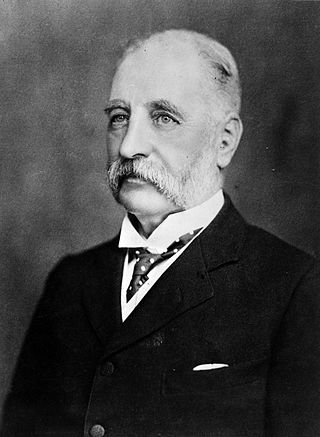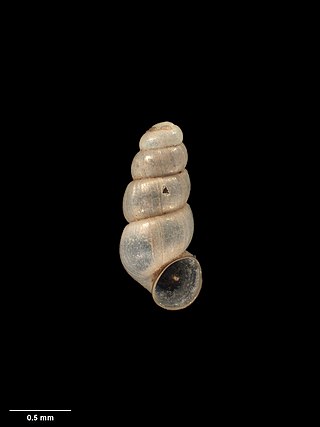
Sir James Hector was a Scottish-New Zealand geologist, naturalist, and surgeon who accompanied the Palliser Expedition as a surgeon and geologist. He went on to have a lengthy career as a government employed man of science in New Zealand, and during this period he dominated the Colony's scientific institutions in a way that no single man has since.

Kahurangi National Park in the northwest of the South Island of New Zealand is the second largest of the thirteen national parks of New Zealand. It was gazetted in 1996 and covers 4,529 square kilometres (1,749 sq mi), ranging to near Golden Bay in the north. Much of what was the North-west Nelson Forest Park formed the basis of the new park. Kahurangi Point, regarded as the boundary between the West Coast and Tasman Regions, is located in the park, as is Mount Owen. The main tramping tracks in the park are the Heaphy Track and the Wangapeka Track.
Richard Kenneth Dell was a New Zealand malacologist.

Potamopyrgus is a genus of minute freshwater snails with an operculum, aquatic gastropod molluscs or micromolluscs in the family Tateidae.
Fluviopupa is a genus of very small freshwater snails that have an operculum, aquatic gastropod mollusks in the family Tateidae.

Hemistomia is a genus of minute freshwater snails with an operculum, aquatic gastropod molluscs or micromolluscs in the family Tateidae.

Tateidae is a family of very small and minute aquatic snails with an operculum, gastropod mollusks in the superfamily Truncatelloidea.

Catapyrgus sororius is a critically endangered species of fresh water snail endemic to New Zealand.

Hadopyrgus ngataana is a tiny, transparent, and critically endangered freshwater snail, found only in a single stream in a cave in New Zealand.

Hadopyrgus rawhiti is a critically endangered species of freshwater snail native to New Zealand.
Opacuincola cervicesmadentes is a critically endangered species of freshwater snail endemic to New Zealand.
Opacuincola dulcinella is a critically endangered species of freshwater snail endemic to New Zealand.

Opacuincola eduardstraussi is a critically endangered species of fresh water snail native to New Zealand.
Potamopyrgus acus is a critically endangered species of fresh water snail native to New Zealand.
Potamopyrgus doci is a critically endangered species of fresh water snail native to New Zealand.
Hadopyrgus is a genus of white or transparent freshwater snails found only in New Zealand. They are micromolluscs, just a few millimetres long, in the gastropod family Tateidae. Hadopyrgus species are subterranean – living in caves, underground aquifers, or deep in river gravels – and so were named from the Greek hades (underworld) and pyrgos (tower). They can have quite restricted ranges: Hadopyrgus ngataana, for example, has been found in just one pool, in a stream flowing through a single cave.

Potamopyrgus oppidanus is a species of freshwater gastropod mollusk in the family Tateidae. It is endemic to New Zealand where it is found only in one area in the town belt of Wellington.

Opacuincola gretathunbergae is a freshwater snail endemic to New Zealand. It is named after the climate activist Greta Thunberg.











